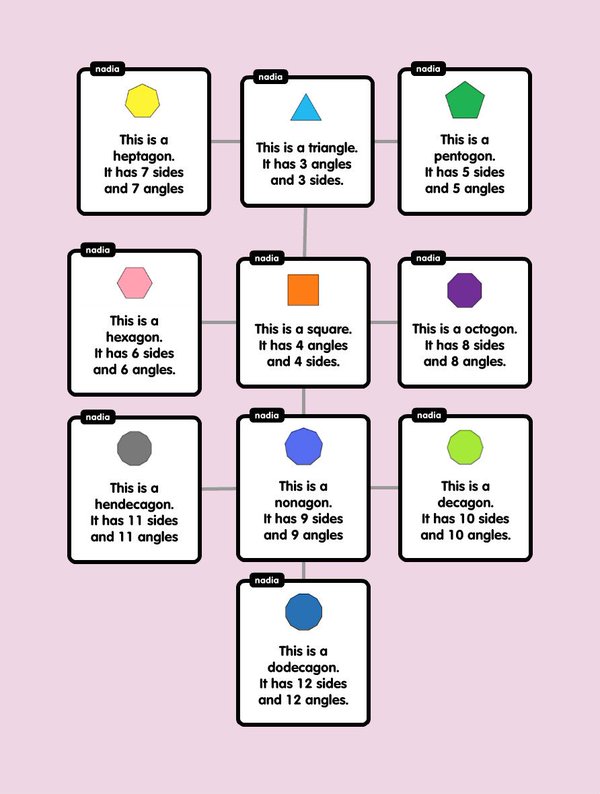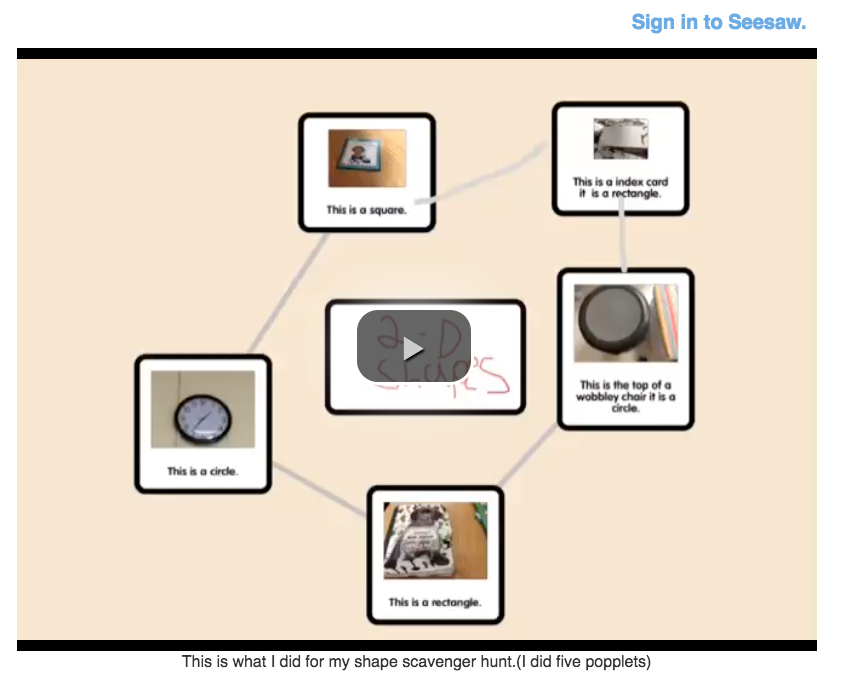We have had a number of requests recently from the Popplet community for more math work. It was even suggested that our most current blog posts displayed a literary/language bias. We did the math, and the results spoke for themselves – time to balance this content equation we think.
So, using a string of examples, we will now set out to prove that Popplet is a popular and effective tool in the math class. We will even show our working!
Learning to Tell Time
How do we learn? Well, we first learn what we need to survive and prosper. And just as babies and toddlers develop language to express their needs, youngsters must also develop number skills for essential things like counting how many candies they have, saying how many other kids are in their class, or telling the time…for example!
Technology Facilitator Jennifer Nelson’s Time Telling activity below uses clock-face images and the time, expressed in numeral and word form, creating a compelling puzzle for young learners. Combined with SeeSaw, proud students can demonstrate their learning and present their work to their classmates or their even prouder parents.
A5: Love using @poppletny this is a math assessment https://t.co/REbVUDBsJz #seesawchat
— Jennifer Nelson (@jenlynnelson) March 23, 2017
Visualizing Numbers and Basic Mathematical Operations
Taking numbers apart and putting them back together again is a common activity. Whether they are conscious of it or not, almost everybody does it every day. Teachers often introduce children to this accumulative life skill in kindergarten and for most young learners, math problems become a whole lot easier when the numbers represent something tangible and visible. Kindergarten teachers know this, and that’s why they use Popplet and other visual apps in their math classes. See how Kara Bunch’s students work with Popplet on their iPads showing the different ways to make “10”:
We used @poppletny to show some ways to make 10! #edtech #techieinmath pic.twitter.com/N4lmMN9bJq
— Kara Bunch (@MMEKteach) March 23, 2017
Claire Brown’s kindergarteners used a similar strategy for decomposing numbers:
Using @poppletny this week w/ a partner to practice & show decomposing numbers! pic.twitter.com/FuhtTVscEV
— Claire Brown (@_ClaireAnnBrown) April 6, 2017
Beautifully basic exercises where the children are learning the vital language of mathematics, and having fun doing it. Here’s how it’s done:
- First, the students create various number combinations using dual-colored counters to represent different parts of the number being investigated. (NOTE: if you don’t have counters, or you could always use the Popplet Drawing Tool)
- Next, when they are happy with their work, they take pictures with their iPads.
- Then, they upload the images directly from Camera Roll to their popplets.
- Finally, students can add the equations to the corresponding image popplet.
Simple addition and subtraction can be demonstrated this way as can multiplication, division, and inequality.
Place Value App Smash
When the numbers start to get bigger, longer or more complex, as numbers tend to do, then Popplet can help students make sense of them. Take a look at this Place Value activity from the classroom of 2nd-grade teacher Melissa Hayes:
Class building 3 digit numbers, comparing numbers, and writing them another way App Smashing @poppletny@Classkick #numberpieces#komakoma pic.twitter.com/4SDrFotV0Y
— Melisa Hayes (@hayes_melisa) April 5, 2017
Melissa’s students combine Popplet with Class Kick, Number Pieces, and Koma Koma, giving themselves a good grasp of the decimal system.
Studying Shapes – Geometry Popplets
It’s not all fun all the time with Popplet. Some teachers use Popplet for assessment, like this Quadrilaterals Assessment from The Alma mater School in Lahore, Pakistan. I must say though, it does look a lot more fun than a math assessment without Popplet!
Grade 4 making popplet on the topic "Quadrilaterals" in March Assessment Test of Maths. pic.twitter.com/IEiCRMUlqZ
— almamaterschool (@amschool80) April 6, 2017
Popplet’s features make it perfect for studying all sorts of shapes. This is elegantly illustrated by Nadia and her Shapes popplet, shared in Public Popplets:

Another favorite geometry activity is Shape Scavenger Hunt like, this one from Jamie Silverboard’s 2nd-graders:
Popplet and the Language of Mathematics
Apple Educator Clare Coyle from Belfast, says it all in her tweet:
Using Popplet in a fun and creative way to embed mathematical language
Using @poppletny in a fun and creative way to embed mathematical language with @AbacusandHelix @StOPPSBelfast pic.twitter.com/k7z5A8Ar6s
— Clare Enright (@MrsEnrightSOP) March 29, 2017
Yes, fun and creative! No longer is math the difficult domain of the few. Because of Popplet, and other classroom apps, mathematics is becoming more attractive and less of a mystery to young learners. Very good news for them and the digital world they will surely inhabit.
Fractions Appsmash!
App-smashing what they know in this case. An elegant, inclusive activity about who’s who and what they are wearing in Mrs. Bork’s 3rd-grade class. For sure, an unforgettable lesson.
@Seesaw @poppletny Getting a 3rd grade app smashing with fractions! pic.twitter.com/VBEzWITO12
— Janis Bork (@BorkJanis) March 31, 2017
Math Without Borders (Europe): A History of Mathematics
Like pretty much all essential knowledge, we didn’t just stumble across it recently. In the case of mathematics, there is evidence of study dating back 4,000 years. Certainly, since Pythagoras (the late 6th century BC), the discoveries of mathematicians have deeply influenced the development of humanity. Arguably, mathematics has been the most influential of all the academic disciplines. Sometimes the bigger picture provides a greater understanding, as we can see in this collaborative popplet:
We hope that you agree that Popplet, along with other apps, and the changing attitudes of educators, are drawing more and more students to the study of mathematics. If you would like to see more, take a look at our Twitter and Facebook page. For even more inspiration, check out Public Popplets.
Popplet is available on the web, and as an iOS app for the iPad and iPhone. New web users receive ten popplet boards when they sign up for a free account. Be sure to check out Popplet’s reduced rates for School and Class group subscriptions.